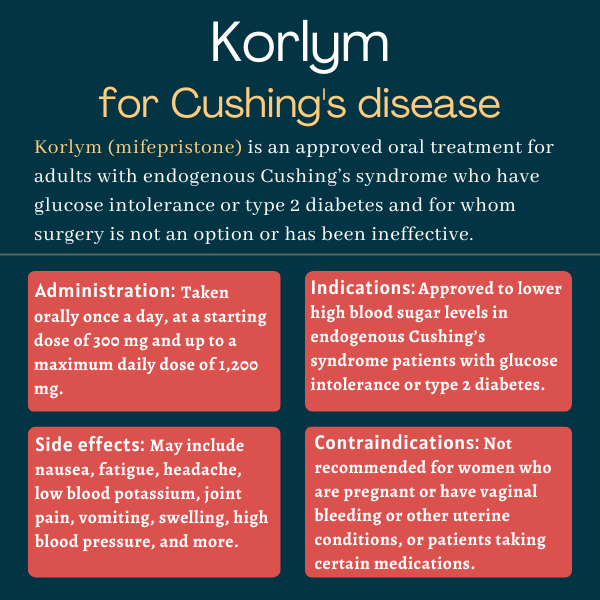FAQs about Korlym
Korlym was approved by the U.S. Food and Drug Administration (FDA) in February 2012 as a treatment to help control high blood sugar levels in adults with endogenous Cushing’s syndrome. The FDA cleared the therapy for use in Cushing’s patients with type 2 diabetes or glucose intolerance who are not surgical candidates or failed to respond to surgery.
There are no known interactions between Korlym and alcohol. However, because drinking alcohol while on certain medications can sometimes lower their effectiveness or cause side effects, patients wishing to drink while using Korlym should discuss that with their healthcare providers.
In the SEISMIC trial that supported Korlym’s approval, significant reductions in blood sugar levels were observed in some patients as early as six weeks after starting treatment. However, each patient is unique and may respond differently to medications based on a number of different factors. Patients should talk to their doctors about how Korlym might benefit them.
The most common side effects associated with Korlym include nausea, fatigue, headache, low blood potassium, joint pain, vomiting, swelling, high blood pressure, dizziness, decreased appetite, and endometrial hypertrophy, or a thickening of the uterine wall. Patients should speak with their healthcare providers if they experience any unanticipated side effects from the medication, as dose adjustments or treatment discontinuation may be needed in some cases. The medication carries a boxed warning that notes that taking Korlym during pregnancy will result in pregnancy loss.
Korlym is not known to cause weight gain. On the contrary, the treatment was associated with significant reductions in body weight for people with Cushing’s syndrome in clinical trials. Patients who gain weight on Korlym or experience other unexpected side effects should let their healthcare team know.
Related Articles

 Fact-checked by
Fact-checked by 







